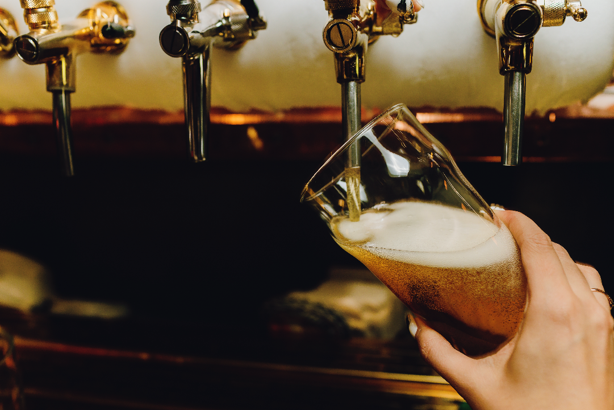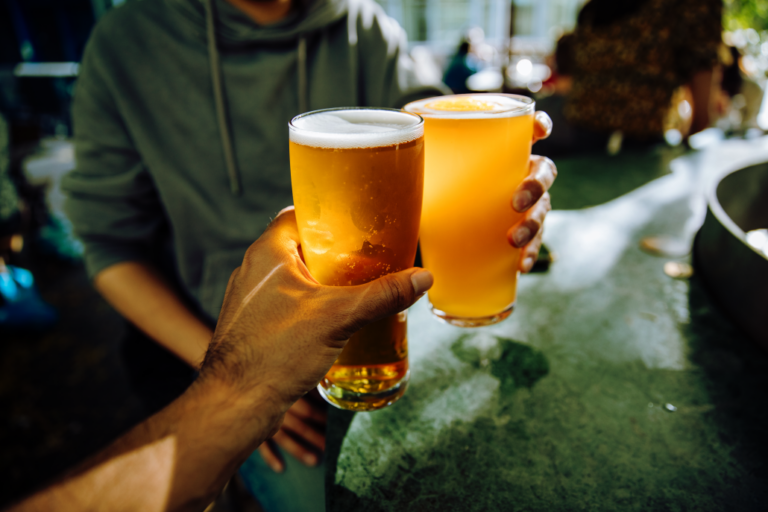23/06/2025
No-alc’s crucial role in future US beer performance
As the US beer market continues its structural decline, the dynamic no-alcohol category provides a much-needed bright spot, with robust growth set to continue in the years ahead – and IWSR’s unique US Navigator database gives a detailed picture of current trends
Beer is undergoing a long-term structural transformation in the US market, where widespread consumption declines are being partially offset by the rapid and continuing expansion of the no-alcohol segment.
According to IWSR, the global authority on beverage alcohol data and intelligence, beer volumes in the US fell by -3% in 2024, consistent with the -3% CAGR decline recorded over the 2019-24 period. That trend is set to continue, with IWSR predicting a -3% CAGR decrease between 2024 and 2029.
The performance of no-alcohol beer in the US provides a sharp contrast with this lacklustre picture: volumes surged up +23% in 2024, mirroring CAGR growth of +23% in the 2019-24 period, which equates to absolute volume gains of 175% over the same timescale. This rapid expansion is predicted to persist, with forecast CAGR growth of +18% to 2029. With the exception of the much smaller stout category, no-alcohol is the only beer segment in the US to show growth on any of these measures.
“The beer category in the US has faced a sustained erosion of consumption occasions, driven by long-term shifts in consumer behaviour, demographic change and competitive category encroachment,” says Marten Lodewijks, President IWSR US
“Historically, beer occupied a dominant position in casual and social drinking moments, but this has been steadily undermined by the rise of alternative alcohol formats, particularly RTDs, which have captured attention with convenience, innovation and lifestyle alignment.
“Within this challenging context, the no-alcohol beer segment has continued to grow, fuelled by the rise of sober curiosity, functional wellness trends and broader acceptance of better-for-you alcohol alternatives. More brands are entering this space with improved formulations and health-conscious positioning.”
Using IWSR’s unique US Navigator database, which provides a monthly read of total beverage alcohol (TBA) trends across all 50 US states, we can analyse the recent performance for non-alcoholic beer in granular detail. These are some of the findings, based on the period between 2019 and April 2025:
- Seasonal peak: Nationally, no-alcohol beer volumes peak during August, with strong performances in June and July, reflecting heightened consumer demand during the summer months, very much aligned to general beer performance and suggesting no-alcohol beer is not just a dry January drink.
- Seasonal lows: February and April show the lowest average volumes, suggesting a post-Christmas and dry January dip and slower momentum in early spring.
- State by state: The top five states in terms of no-alcohol beer consumption, based on their total volumes from 2019 to April 2025, are: California, Florida, Texas, Massachusetts and New York – which is largely related to the size of the population. In 2024, these five states combined accounted for 35% of total US no-alcohol beer volumes. In per capita terms, the top five states are Maryland, Connecticut, Wisconsin, Colorado and New Jersey.
- Wisconsin stands apart: Wisconsin’s monthly trends are an outlier from the national pattern. The state lacks a clear summer peak, and shows irregular volume shifts.
As it continues to expand, no-alcohol beer is increasingly dominating other no-alcohol categories in the US, buoyed by its established maturity in the market and the continuous launch of new brands from both large and small breweries.
“Future volume increases will be driven by a number of factors, including increased efforts to expand draught options in the on-trade, and the involvement of celebrity-owned and endorsed brands,” says Lodewijks. “These celebrity associations are helping to reshape the industry, giving sobriety enhanced social acceptance among consumers.
“Meanwhile, ecommerce presents a growth opportunity for beer in general, as the category under-indexes online, compared to categories that are more established in the channel, such as wine and spirits. But it is a particularly significant opportunity for no-alcohol beer, because direct-to-consumer sales can be fulfilled across the US, with no regulatory restrictions.”
Despite this impressive performance, however, projected gains for no-alcohol beer in the US will not be sufficient to fully offset continued declines in the consumption of full-strength products. This is explained by persistent losses in the dominant lager segment, which accounted for more than 85% of overall US beer volumes in 2024.
The above analysis reflects IWSR data from the 2025 data release. For more in-depth data and current analysis, please get in touch.
CATEGORY: Beer & Cider, No/Low-Alcohol | MARKET: North America | TREND: Moderation |
Interested?
If you’re interested in learning more about our products or solutions, feel free to contact us and a member of our team will get in touch with you.




